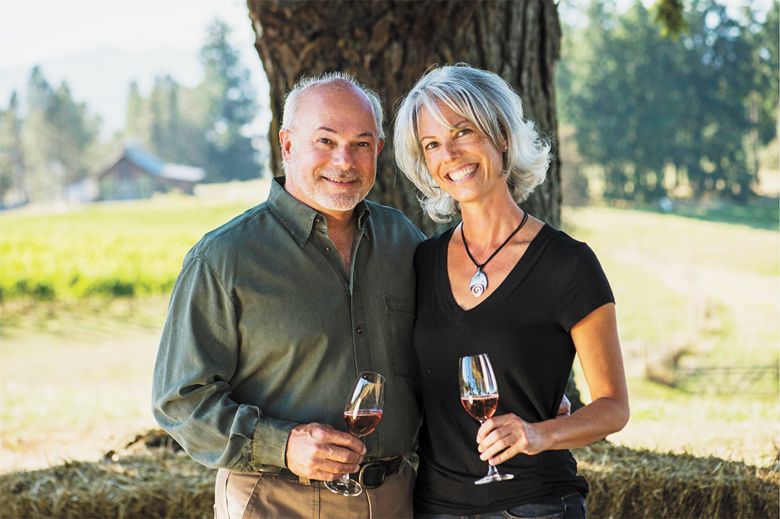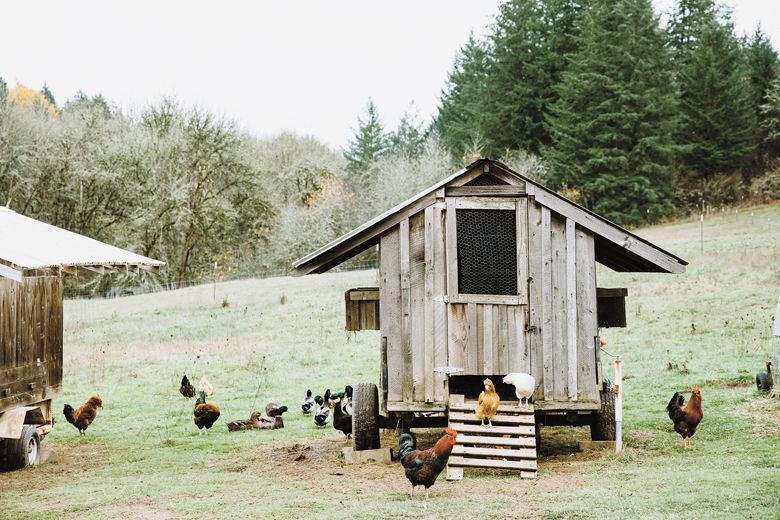Proof is in the Pinot
Biodynamically-farmed Soter Vineyards celebrates 25 year anniversary





By Annelise Kelly
Some people start by growing grapes and eventually “graduate” to winemaking. Tony Soter flipped that journey. Instead, he worked his way from cellar rat to winemaker and consultant in Napa Valley. After a successful career in California, Soter and wife Michelle (since deceased) returned home to Oregon, bought property and launched Soter Vineyards. Soter promptly traded his rubber boots for farm boots, convinced that adjusting his grape-growing was the best way to achieve truly excellent wine.
The couple were determined to build a socially conscious, environmentally sustainable operation, first using organic farming practices and next biodynamic certification. These transitions, although with costs, delivered abundant awards in terms of grape quality. In addition, their winemaking operations conform with their Mineral Springs Ranch, where they grow vegetables and raise Highland cattle, chickens, turkeys, ducks and pigs to supply their culinary program and generate compost. Thirty acres of grain, farmed in partnership with a local dairy farm, supply cattle feed. Combined, these resources support one another in a healthy, self-sustaining eco-system.
CHOOSING BIODYNAMIC
“Why biodynamic?” reflects Soter. “I began to see biodynamics less as a mysterious and quasi-religious practice requiring a leap of faith but rather a prescient philosophy, only beginning to be accepted as scientifically valid.”
The Soters arrived in Oregon planning to grow grapes according to organic standards. However, they were exposed to biodynamic philosophy at the Waldorf School their kids attended. Michelle, a dedicated and idealistic environmentalist, met Nadine Basile at a biodynamic meeting. Basile earned a master’s degree in viticulture, with a background as a vegetable farmer and Demeter inspector. Over eight years Basile was part of the Soter team, expertly guiding their transition to certification in both organic and biodynamic farming techniques.
Soter appreciated Basile’s skill at explaining “with the benefit of science. For example, in biodynamic farming, we apply various preparations to the crops. One is made from a small amount of manure composted in a cow’s horn buried for a year before turning it into a compost tea sprayed in the vineyard. You can think of that as hocus pocus, or as an inoculum that’s bioactive and rich with organisms, contributing to healthy soil and grapevine canopy environment.” Similar to humans taking a probiotic, this minuscule population of organisms can prosper, multiply and enrich the soil and growing conditions.
“We’re increasingly aware of the vast extent to which humans are actually composed of other organisms,” observes Soter. “I think that’s a relatively recent acknowledgment by medicine and science. And it’s perfectly analogous to how we farm for soil health in an effort to transfer that to the whole ecology of our entire property.”
“Biodynamics is a serious commitment to a practice that doesn’t necessarily make sense to most people until they do it,” says Chris Fladwood, winemaker at Soter Vineyards. “I’m now very much a believer but wasn’t when we first started practicing biodynamics in 2013. I started with the company in 2009, so I had a number of years of farming here sustainably, through LIVE, which is a good program. Biodynamics sounded bizarre to me, like hocus pocus. But I had the fortunate circumstance of working with Nadine who really brought us biodynamics. She very clearly showed me there are real foundations in science and practicality. Once you take that first step you realize, oh, wow, there’s a lot of logic behind this.”
MAKING WINE FROM THE GROUND UP
“During my first ten years in the business, I strived to master the craft of winemaking,” recalls Soter. “I soon realized that, even when I thought I was doing a pretty good job, I was less than satisfied with the result.” At this point, Soter donned farming boots, “with the goal of impacting the wine by improving the grape quality. It may sound simple and commonplace now, but in the seventies and eighties, even U.C. Davis was bifurcated. There was a kind of cold and limited divide between the viticulture and wine departments. Industry grape growers would say ‘the biggest pest in the vineyard is a winemaker.’ I felt like I could improve if I became a better farmer. I still believe that. Years ago, I started calling myself a winegrower. It’s just a made-up word, but emphasizes that growing and making are really inseparable and should be thought of that way. “
BIODYNAMIC FOR BIODIVERSITY
The value of biodynamic farming on diversity resonated with the Soters. While organic farming governs the growing field, which can be just a few yards from the potential contamination of conventional farming, “in biodynamic and LIVE certifications, the whole property has to conform. And there are huge benefits to having a diverse landscape surrounding or intermixed in your biodynamic vineyard,” says Soter. “Here at Mineral Springs Ranch, we have 250 acres and just 50 acres of vines. There’s grassland for grazing along with seed crops. We have stands of oak woodland and fir trees and a variety of natural draws and unfarmable land growing both native and invasive species we try our best to manage. That diversity gives us lots of flowering plants at different times of the year. We’re also adding plantations for bee and monarch butterfly habitats. We even cultivate the cover crop between the vine rows –depending on what’s needed.”
THE PROOF LIES IN THE PINOT
“To make the best wines possible, you first need to grow stellar grapes,” states Fladwood. “Biodynamics has enabled us to make wines of superior quality by giving us grapes of greater personality. During our transition to biodynamic agriculture, I couldn’t help but notice how much more interesting the grapes began to taste. They possess more structure, tannin, depth of flavor and extra personality. Having seen that, I can tell you biodynamics is very much a vehicle to grow grapes that are more unique. One thing that other winemakers can’t replicate is our grapes. The more character we can unleash and unlock from our ground via our grapes, the more uniqueness we have when we translate those grapes into wine. Biodynamics absolutely does that. I guess you can call me a convert.”
He also believes biodynamics “forces you to be more present in your vineyard and with your wines. One of the keys to making exceptional wines is understanding your grapes.” When farmers only see their vines only every so often to spray, “they miss the opportunity to walk the rows every few days, continually tasting grapes, looking at vigor patterns and overall health of the vines. Those are all important personality traits.”
DIVERSITY ADVANCES SUSTAINABILITY
“We really appreciate the holistic approach of biodynamic farming,” says Hallie Whyte, managing director at Soter Vineyards. “It’s the entire property and not just the vineyard, or a portion of our ranch. Everything is biodynamically certified. If there’s a certification that pushes us even further, we’re always interested in learning and growing. We actually focus more on biodiversity than biodynamics because we believe diversity of insects, plants, animals and humans is key,” to a more stable, resilient environment.
According to biodynamic principles, “your whole farm could act like an organism, with multiple components and interactions that we may or may not understand perfectly,” says Soter. “One example is planting flowering cover crops, providing a more favorable habitat for insects that might otherwise occupy our grape canopies and sucked chlorophyll out of the leaves.” Diversity can “cultivate natural opportunities for better balance,” mitigating the need for chemical intervention.
PEOPLE, PLANET, PROFIT
“We’ve embraced social sustainability from the start,” reflects Whyte. “Back in 2010, when I interviewed, they provided full health care for all employees… because without healthy employees, the business can’t be healthy. We are currently awaiting our B Corp certification. We think that’s extremely important and probably not talked about enough when discussing sustainability.”
“I’ve been organically farming with an awareness of human impacts on our environment since the seventies,” Soter states. “It’s just trying to meet some of the hidden costs that we often don’t account for, being as responsible as we possibly can be and minimizing negative impacts. I also believe it creates a better product and safer work environment.” Sustainability from all perspectives, because “we have something we feel is worth maintaining. I must sustain the business so it can provide rewarding opportunities for our people. They’ve dedicated so much to this property and company.”
AUTHENTIC HOSPITALITY
The character of sustainability and transparency translates into the winery’s hospitality. Soter is proud of the diversity of the farm. Whyte says, “Sometimes, in the peak of the season, we can make an authentic meal locally grown, nearly all sourced directly from the property.” Soter Vineyards offers their MSR Provisions Tasting twice daily, four days a week.
“The goal of the tasting room is to educate people. It’s never to be snooty or make any visitor feel unwelcome,” says Whyte. “Tony tries to farm the best way, treat his employees the best way and make the best wine possible.”










